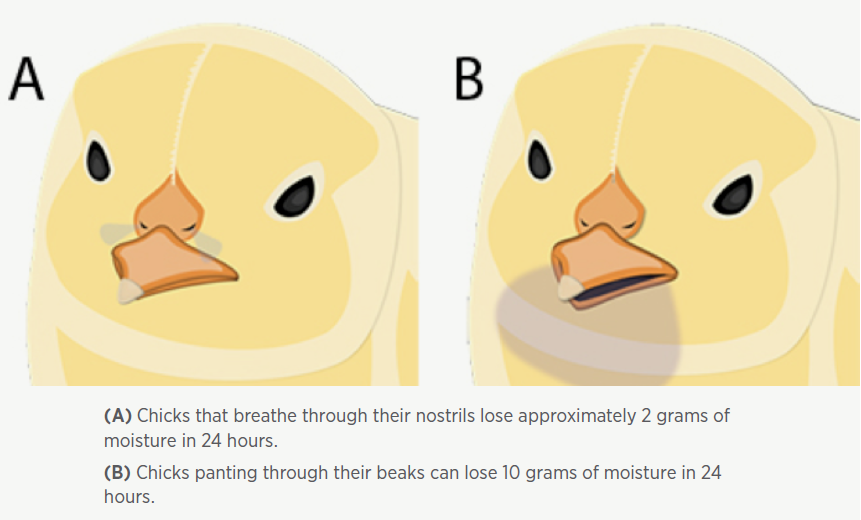During storage, the internal temperature of the birds should be maintained between 39.5 ° C and 40 ° C (103 ° F and 104 ° F) .
Hatchery
Four fundamental principles for optimal chick storage
To read more content about 2019
Hatchery
To read more content about 2019
Content available at:
Español (Spanish)
At the end of a hatch day, all the processed chicks are stored for a certain period of time before being transferred to the farm.
Chick storage time can vary considerably, ranging from a couple of hours to overnight.
A thorough understanding of the principles inherent in chick storage is essential to preserve chick quality and performance and ensure their well-being.
This article explains these principles and highlights good storage conditions for chicks.
The hatcher itself provides an excellent storage environment for the chicks as it is designed to maintain a completely controlled and stable environment, with plenty of cooling and forced air flow. However, the chicks cannot stay in the hatcher forever, as they must be separated from the egg shells and unhatched eggs.
As soon as the trolleys are removed from the hatcher, the airflow surrounding the day-old chicks will be reduced to the airflow present in the area to which they have been moved.
2. MAINTAINING AN ADEQUATE ROOM TEMPERATURE IS VITAL
After separation of the shells and further processing, the day-old chicks will have to be stored in the chick storage room for a period of time.
Day-old chicks are unable to regulate their body temperature during the first weeks of life, so they depend on the ambient temperature to remain in perfect condition.
During storage, the internal temperature of the birds should be maintained between 39.5 ° C and 40 ° C (103 ° F and 104 ° F) .

When the bird is at this temperature, it breathes through the nostrils limiting the amount of moisture loss to around 2 grams in 24 hours. In this scenario, the birds can stay very comfortable for long periods of time.
The ideal chick storage room temperature varies depending on the air speed. In general, at a temperature between 24 and 26 ° C (75-79 ° F) with a constant air flow and a supply of oxygen-rich air, chicks are comfortable .
Lower temperatures require lower air speeds and higher temperatures require higher air speeds.
